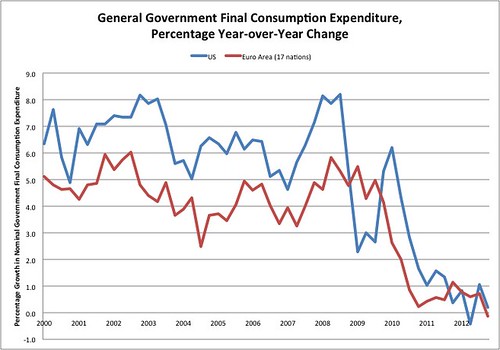Here is an interesting look at government spending in the United States and Europe, excluding transfer payments. In other words, the graph (reproduced below) reflects final consumption by governments in both jurisdictions.

There are a few things that might be said about this.
Austerity, as a matter of governmental contribution to aggregate demand, is as real in the United States as in the Eurozone. It may therefore be that the recent differences in economic performance between the two areas have more to do with other factors, notwithstanding the claims of certain politicians and pundits.
The graph, of course, ultimately says nothing about the role of government in the economy or in the lives of its citizens, which informs a great deal of the passionate argument about the "size of government."
Neither does the graph reflect the present impact of the perception of long-term national indebtedness. The belief that the anticipation of decades of lower living standards under the burden of the national debt is hurting today's economy is a cornerstone of the economic critique on the right.
Finally, the graph does not (and cannot) say anything about the impact of different monetary policy.
Point is, one can rarely derive what ought from what is, and certainly cannot in this case.


No comments:
Post a Comment